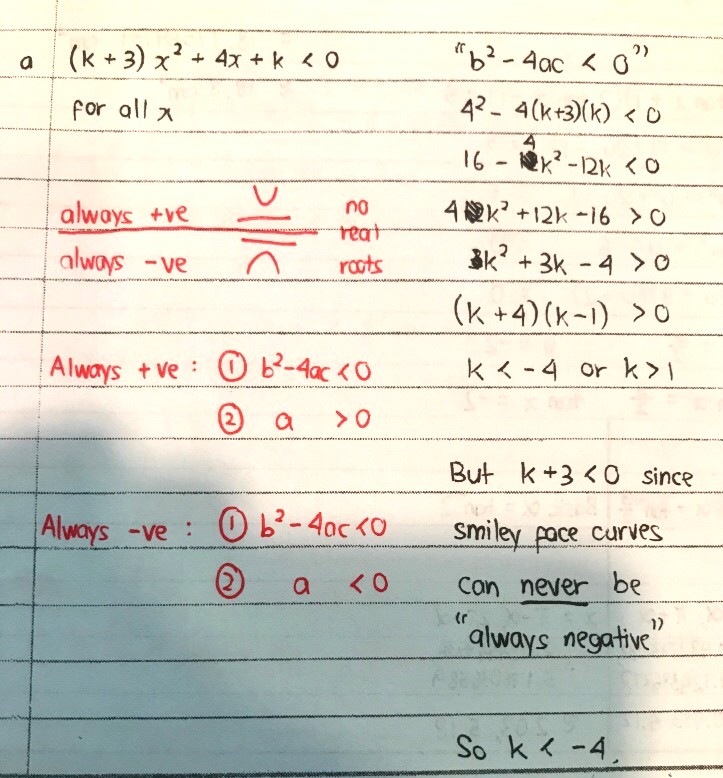Eric Nicholas K's answer to Candice's Secondary 4 A Maths Singapore question.
done
{{ upvoteCount }} Upvotes
clear
{{ downvoteCount * -1 }} Downvotes
Good evening Candice! k < -4 gives the “always negative” case, while k > 1 gives the “always positive” case.
Date Posted:
4 years ago
Now, for a curve which is always negative or always positive, the graphs lie completely below or completely above the x-axis, and therefore do not cut the x-axis at all. The equations will have no real roots as a result, so b2 - 4ac < 0.
The distinguishing factor between always negative and always positive curves is the signage of the coefficient of x2. If a < 0, we get sad face graphs. If a > 0, we get smiley face graphs.
Note that smiley face graphs can never be “always negative”, since the curve will keep increasing indefinitely after the turning point. Similarly, sad face graphs can never be “always positive”, since the curve will keep decreasing indefinitely after the turning point.
The distinguishing factor between always negative and always positive curves is the signage of the coefficient of x2. If a < 0, we get sad face graphs. If a > 0, we get smiley face graphs.
Note that smiley face graphs can never be “always negative”, since the curve will keep increasing indefinitely after the turning point. Similarly, sad face graphs can never be “always positive”, since the curve will keep decreasing indefinitely after the turning point.
Thank you!
Whenever we see “always positive”, “always negative” or an equation involving x and k which does not end with an equal sign, for example in question b, we always do two things.
1. b2 - 4ac < 0 (in all cases)
2. Signage of a; this will determine whether the curve is always positive or always negative
Let me know if you need more explanation and I will explain them to you again.
1. b2 - 4ac < 0 (in all cases)
2. Signage of a; this will determine whether the curve is always positive or always negative
Let me know if you need more explanation and I will explain them to you again.
Ah its ok now! I understand thanks :D



